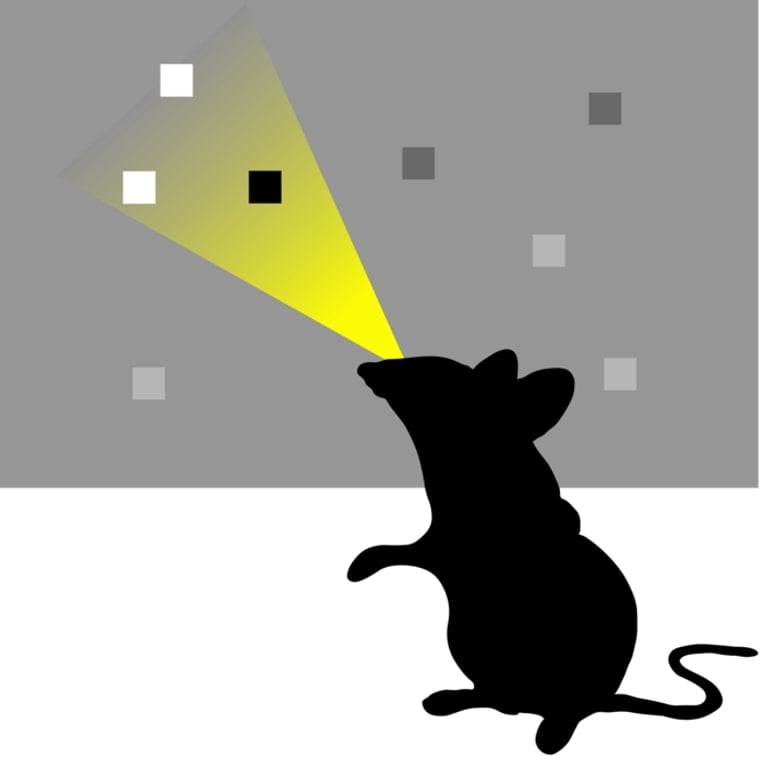Summary: Spatial attention and running influence individual neurons independently with different dynamics.
Source: Sainsbury Wellcome Center
When you are not paying attention, performance drops. For example, you are four times more likely to be in a crash if you use your phone while driving.
We know differences in brain states, such as variations in attention, can influence sensory processing, but how do these states influence individual brain cells?
Neuroscientists at the Sainsbury Wellcome Centre at UCL explored how individual neurons in mice are influenced by two different cognitive and behavioural states – attention and running. These two states were once thought to share a common mechanism.
However, in a new study published today in Neuron, SWC researchers found that spatial attention and running influence individual neurons independently with different dynamics.
“Previous studies in mice and primates have shown that spatial attention and running have very similar effects on sensory processing. When a mouse is running or when a primate is paying attention to a specific location, there is an increase in the sensory responses of neurons in the visual cortex.
“However, it wasn’t known how these states interact to modulate responses of individual neurons as there was no experimental paradigm that could address this question in the same animal,” said Takahiro Kanamori, Senior Research Fellow in the Mrsic-Flogel lab at SWC and first author on the paper.
To solve this problem, Kanamori and Mrsic-Flogel designed a behavioural task where mice had to pay attention to one of two locations on a computer monitor and discriminate the orientation of grading stimuli to gain a reward.
The location could change within a session to induce a change in attentional state and in all trials, mice could choose whether to run or sit still, which allowed the neuroscientists to compare the influence of spatial attention and running on neural responses.

Kanamori recorded from excitatory neurons in layer 2/3 of the primary visual cortex, as these neurons have previously been shown to respond more when mice are running and during spatial attention tasks in primate studies.
“We found that attention and running are imposed on individual neurons independently. It makes sense to separate these signals, as attention is expected to improve visual processing even when the animals do not run.
“And while they run, they might shift their visual attention to different locations in the environment without interference from the influence of running.” said Tom Mrsic-Flogel, SWC Director and lead author of the study.
The team also tracked how individual neurons are modulated by spatial attention or running across days. They found that modulation by running is quite stable even across days, whereas modulation by spatial attention is very dynamic and not reliable across days or even within a single day.
The next steps for the researchers are to understand at the molecular level the mechanisms by which these distinct response modulations can happen.
Funding: This research was funded by post-doctoral fellowships from Uehara Memorial Foundation and Kanae Foundation and the Sainsbury Wellcome Centre Core Grant from the Gatsby Charity Foundation (GAT3755) and Wellcome (219627/Z/19/Z).
About this neuroscience research news
Author: April Cashin-Garbutt
Source: Sainsbury Wellcome Center
Contact: April Cashin-Garbutt – Sainsbury Wellcome Center
Image: The image is credited to Sainsbury Wellcome Center
Original Research: Open access.
“Independent response modulation of visual cortical neurons by attentional and behavioural states” by Takahiro Kanamori et al. Neuron
Abstract
Independent response modulation of visual cortical neurons by attentional and behavioural states
Highlights
- Mice can deploy spatial attention to different locations within a hemifield
- Spatial attention modulates neurons with receptive fields at attended location
- Individual neurons are independently modulated by spatial attention and running
- Spatial attention and running modulate single V1 neurons with distinct dynamics
Summary
Sensory processing is influenced by cognitive and behavioral states, but how these states interact to modulate responses of individual neurons is unknown.
We trained mice in a visual discrimination task wherein they attended to different locations within a hemifield while running or sitting still, enabling us to examine how visual responses are modulated by spatial attention and running behavior.
We found that spatial attention improved discrimination performance and strengthened visual responses of excitatory neurons in the primary visual cortex whose receptive fields overlapped with the attended location.
Although individual neurons were modulated by both spatial attention and running, the magnitudes of these influences were not correlated. While running-dependent modulation was stable across days, attentional modulation was dynamic, influencing individual neurons to different degrees after repeated changes in attentional states.
Thus, despite similar effects on neural responses, spatial attention and running act independently with different dynamics, implying separable mechanisms for their implementation.






